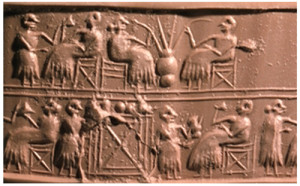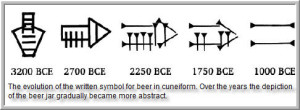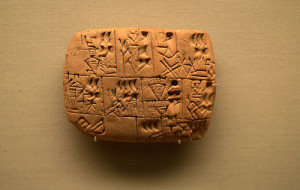Walking in Beauty
Aligning your will with the Logos of nature, discovering your place in the natural order, is a common theme in many philosophies and religions. One such example is the Navajo sense of hózhó. I first became aware of this Navajo concept when I read a mystery novel by Tony Hillerman, The Blessing Way. I’ve read through the series twice and think I may do it a third time. The stories were always told within the context of some aspect of Navajo culture, which I’ve come to deeply respect.
In the Navajo language there is no word for religion, but hózhó comes closest. Hózhó defines the essence of Navajo thought and is their basic value concept. The term is often translated as: “it is pleasant, beautiful or blessed.” It expresses a combination of concepts in English such as: beauty, perfection, harmony, goodness, normality, success, well-being, blessedness, order, and ideal. Every aspect of traditional Navajo life, secular and spiritual, is related to hózhó.
The Navajo believe the universe is “an orderly, all-inclusive, unitary system of inter-related elements.” A universal continuum ranges from the tiniest insect, being or power; to the largest and most powerful, such as the great mountains that set the boundaries for the Navajo country or the thunder and lightening that crash above them. This all-inclusive universe contains evil as well as good. This is not an abstract sense of evil, but the complement to what is hózhó in all things—controlled, harmonious, orderly. Evil is then what is uncontrolled, unharmonious, disorderly in all things. “Every human being, no matter how good in life, has an evil component.” Evil and danger come from disturbances in the natural order or balance in the universe.
Similar to the principle of reciprocity, hózhó governs Navajo relations with many elements of the universe, including other humans. So injury for injury, sickness for misbehavior, and favor for favor will set things right. this sense of reciprocity echoes the teaching of “an eye for an eye” in Leviticus 24:17. In the Sermon on the Mount, Jesus noted how reciprocity was used to justify returning evil for evil, but then restated it in a way similar to the concept of hózhó: “You have heard that it was said, ‘An eye for an eye and a tooth for a tooth.’ But I say to you, Do not resist the one who is evil. But if anyone slaps you on the right cheek, turn to him the other also.” (Matthew 5:38-39)
The Navajo ceremonial system, which is aimed at the restoration of universal harmony, ritualizes this principle of reciprocity. A ceremony or “sing” is conducted by a hataalii or “singer.” Singers often apprentice with older experts for long time periods. The following is the closing prayer from the “Navajo Way” Blessing Ceremony:
In beauty I walk
With beauty before me I walk
With beauty behind me I walk
With beauty above me I walk
With beauty around me I walk
It has become beauty again
It has become beauty again
It has become beauty again
It has become beauty again
Navajos believe in a Creator, a formless spiritual force that is the source of all life. When Navajos pray to this almighty Force, they address the evidence of its powers: the sun, the wind, etc. The traditional Navajo way can be described as “life itself, the land, and well–being.” All living things—people, plants, animals, mountains, and even the Earth itself—are relatives. Each has its own spirit or inner form, which gives it life and purpose within the orderly, interconnected universe. Like the ancient Stoics, the purpose of Navajo life is to maintain balance between the individual and the universe; to live in harmony with nature and the Creator.
Regrettably, the union extolled here seems to be a pantheistic one, where everything in existence merges into God. As Charles Hodge noted in his Systematic Theology, God exists as the universe in pantheism: “All is God.” All reason is his reason; all activity is his activity. Good and evil, pain and pleasure, are equally phenomena of God; “modes in which God reveals himself, the way in which He passes from Being into Existence.” He is not then a person; someone we can trust. God is merely the substance by which the universe and all it contains manifests its eternal transformation. Finding your place within the natural order, striving to walk in beauty, does recognize a beauty and purpose within the creation, but ultimately that is lost in the pantheistic union with God.
The wisdom teaching of Ecclesiastes seems to be a point of contact in Christianity with hózhó. We see this in Ecclesiastes 3:11: “He [God] has made everything beautiful in its time.” And again in Ecclesiastes 3:1ff: “For everything there is a season, and a time for every matter under heaven.” Yet in the end, the path walked in beauty by the Navajo will diverge from that of the Christian. For the hózhó of the followers of Christ is to “Fear God and keep his commandments, for this is the whole duty of man.” (Ecc. 12:13)




